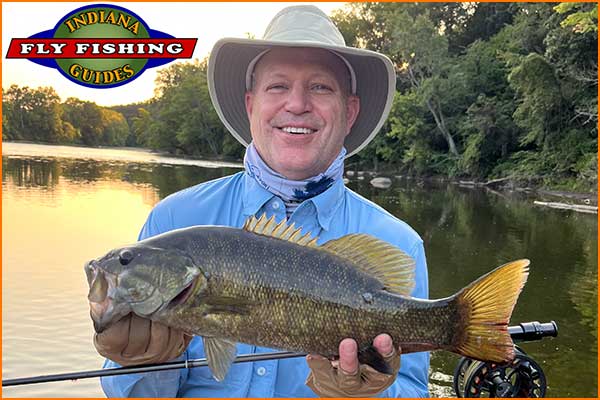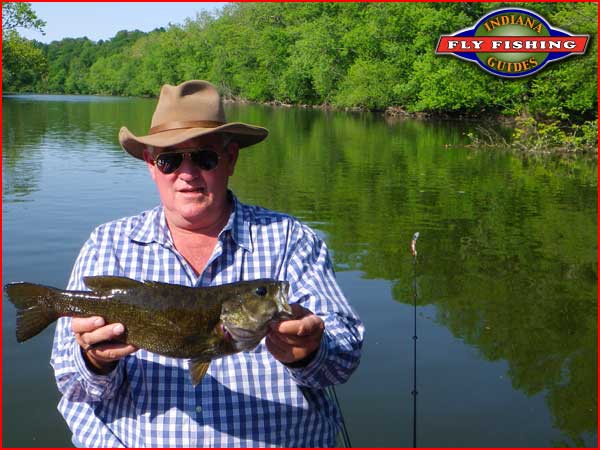Flyfishing the Tippecanoe River
Just a few miles upstream from the site of the Battle of Tippecanoe (and a couple of centuries later), exists the opportunity to engage in a fly rod battle with a number of warmwater species; some in near record sizes.
Indiana’s Tippecanoe River from Oakdale Dam (impounding Lake Freeman) downstream approximately 18 miles to its confluence with the Wabash River is a wonderful warmwater fishery. The Tippecanoe River is a stew of biodiversity, hosting many species of fish including: Smallmouth Bass, Largemouth Bass, Spotted Bass, and Rock Bass, Catfish, Carp, Suckers, Buffalo, Walleye, Sauger, Freshwater Drum, Striped Bass and White Bass. The Tippecanoe River at Oakdale Dam is located in Monticello, Indiana near Lake Freeman, Lake Shafer and Indiana Beach Amusement & Water Park.
To enjoy the best, most consistent fishing, floating is the best way to approach the river. With drastic flow fluctuations on a daily basis, and private property lining the river (with hundreds of cabins), there is limited wading access. However, during low flows (below 700 cfs), wading is possible and can offer some great fishing at the bridges, including CR-725 N, SR-18, W. Bicycle Bridge Rd., and Pretty Prairie Rd.
The river is nearly always floatable with a recommended low flow of 500 cfs and a high flow of 2500 cfs. Below 500 cfs the river bed is a rock garden and dragging a boat through long flats is taxing. Flows above 2500cfs are very difficult to fish with flyrod unless you are using sinking lines and deep water tactics. The 18 mile stretch from the dam to the confluence with the Wabash River is divided logically into two floats of approximately 9 miles each; from the Oakdale Dam to SR-18 and SR-18 to the confluence. There is an improved boat ramp below the dam on CR-725 N and an unimproved ramp at the SR-18 bridge.
Fishing Tactics & Flies:
The “Tippi” is a big river with miles of deep water, steep banks and VW to SUV-sized boulders. On top of this, operations at the dam can raise or lower flows quickly. The USGS flow monitoring chart can look like a sine wave on any given day. The gradient has some angle to it and the water moves quite persistently in many places. To find fish, you’ll need both floating and sinktip or sinking lines to present flies at all depths. In general, the cooler the weather the deeper you need to fish. During warmer weather, fishing poppers and shallow-to-mid-depth streamers can draw slashing strikes and fishing streamers deep can get you into a battle with any of the aforementioned species. Also, bottom-bouncing (or indicator nymphing) a Wooly Bugger or crayfish imitation is worth a try. Part of the fun is not knowing what species you may hook.
Standard warmwater flies are good choices for the “Tippi”. For surface fishing try both deerhair and foam poppers/sliders, particularly Dahlberg Divers and Sneaky Petes. For streamer fishing, Clousers, Half & Halfs and Murdich Minnows in standard colors, sculpin imitations such as the Conrad Sculpin, Woolhead Sculpin and Whitlock’s Near-nuff Sculpin (black, brown, tan, olive), Wooly Buggers, Clouser Swimming Nymphs and crayfish patterns should round out your fly box.
The Tippecanoe River is one of many fine fisheries in Indiana Smallmouth Country, and worth a visit if you’re in the area.






